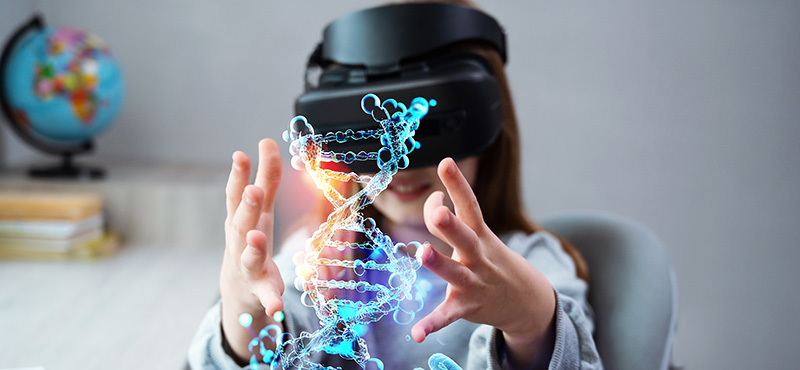Welcome to the future of education, where experiential classrooms take the place of chalkboards and textbooks are replaced by interactive virtual lessons that ignite curiosity.
But emerging technologies set to reshape the way we learn will demand powerful networks that have the heightened capacity, reliability, and security to operate seamlessly.
Enter the stage, 10G: The broadband network of the future will transform the way we live, work, learn, and play. 10G will enable creators, inventors, and entrepreneurs to craft the innovations of tomorrow – and education is a field ripe for fresh tech solutions.
Education in a 10G World
To better understand how 10G will impact the future of education, the Future Today Institute (FTI) forecasted what learning will look like in 2032.
Evolving into the experiential classroom: A host of transformative and immersive technologies will reshape and redefine learning spaces, driven by the advancement of 10G technology.
- Ancient civilizations will come to life as students explore historical sites through augmented and virtual reality without leaving their desks.
- Powered by advanced artificial intelligence (AI), personalized learning pathways will emerge, catering to each student’s unique strengths, weaknesses, and learning styles.
Strengthening the home-school connection: 10G will further dismantle barriers between schoolwork and homework, paving the way for robust partnerships between parents and educators.
- Robots and virtual assistants will seamlessly step into the role of teacher’s aides, extending children’s studies within the comfort of their homes.
- With access to real-time information about their kids’ academic performance, parents can collaborate more effectively with teachers to ensure students get personalized support.
Enhanced higher education: The emergence of 10G symmetrical speeds and enhanced capacity will transform secondary and college-level learning.
- AI will take center stage, orchestrating real-time translations during live-streamed discussions – enabling learning across languages, geographies, and backgrounds.
- Virtual mentors will enhance student learning, guiding discussions within weekly study groups and offering personalized support.
Dive deeper: Learn more about how 10G will transform education.
Essential Connection: Digital Learning & High-Speed Internet Access
As we prepare for the technological evolution of education, the need to close America’s digital divide is critical so that all can participate.
Why it matters: The gap between those who enjoy high-speed internet access and those who do not could cause some students to miss out on the educational opportunities that the 10G-powered future offers.
Fortunately, a historic infusion of federal funding is being delivered to states to expand broadband access and get America to 100% connectivity. Here is what states can do to make the most of this pivotal moment:
- Prioritize unconnected areas: Invest in projects that will connect communities lacking internet access while taking measures to avoid unnecessary waste, fraud, and abuse.
- Partner with proven providers: Leverage experienced cable broadband providers, who have connected 82 million Americans, to expand connectivity effectively.
- Support assistance programs: Support initiatives subsidizing broadband costs, devices, and digital literacy training to broaden digital access and inclusion.
Bonus: Have you heard of the Affordable Connectivity Program (ACP)? It’s a federal initiative that provides free or discounted high-speed broadband to qualifying households nationwide. Learn more and see if you are eligible today!
Join us: Sign the petition to tell your state’s leaders to make smart broadband investments with their share of the federal broadband funding.
